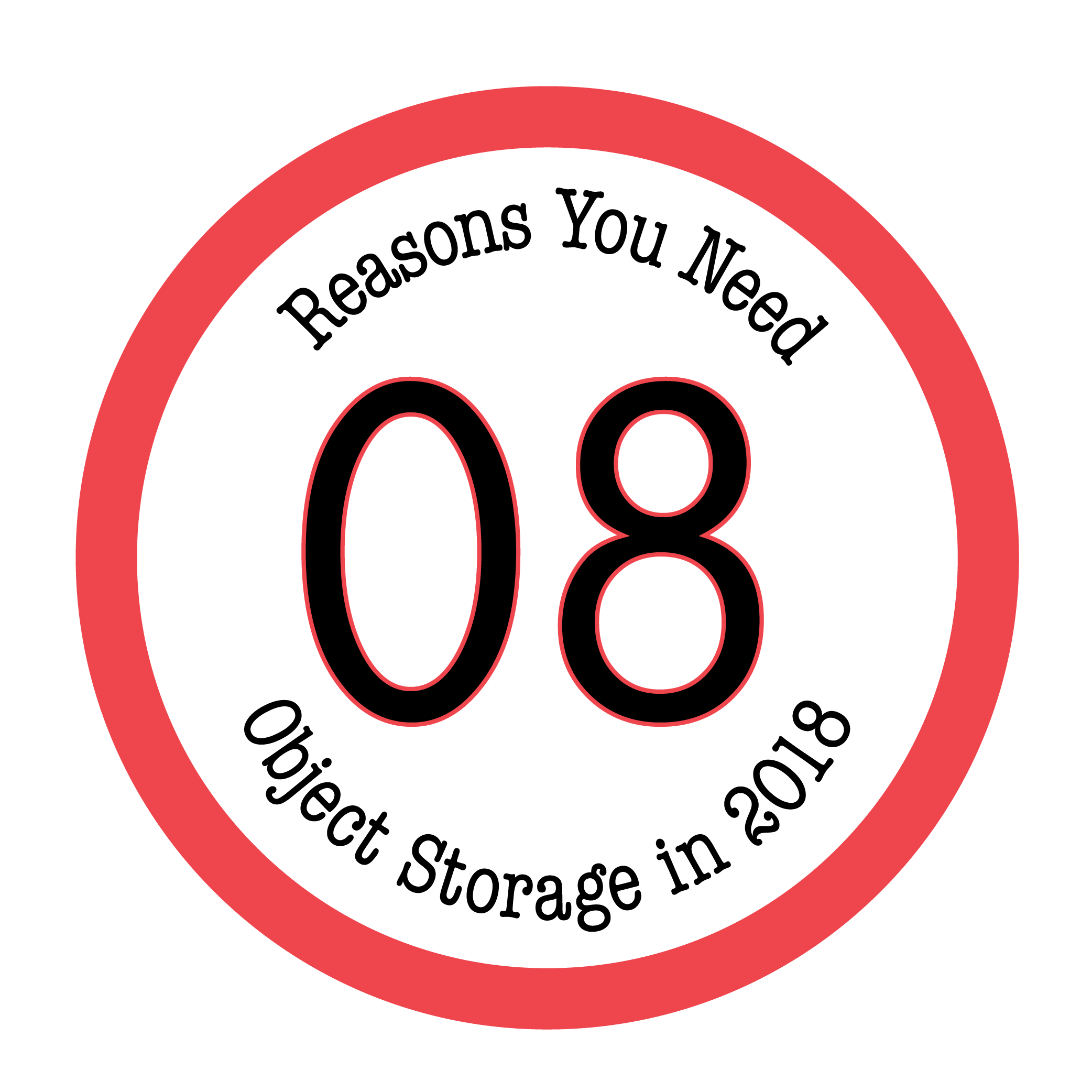News
Archive

8 Reasons You Need Object Storage in 2018
 2017 is in the books and 2018 is already upon us. Data storage challenges are escalating faster than ever for many organizations, especially those involved in storing, developing and delivering digital assets. Last year, I wrote about the 7 Reasons You Need Object Storage in 2017 from the perspective of how object storage technology functions. This year, let’s examine eight market trends that support the case for using object storage:
2017 is in the books and 2018 is already upon us. Data storage challenges are escalating faster than ever for many organizations, especially those involved in storing, developing and delivering digital assets. Last year, I wrote about the 7 Reasons You Need Object Storage in 2017 from the perspective of how object storage technology functions. This year, let’s examine eight market trends that support the case for using object storage:
- Proliferation of mobile devices: According to a 2017 study by Forrester Research, 70 percent of the world’s population will be connected by mobile devices by 2022, up from 21 percent of the global population in 2013.
- Data growth associated with digital video, over the top (OTT) streaming, video on demand (VOD) and the rise of 4K: As new content is created, the sophistication of delivery methods advance and video resolution rises, rapid data growth strains the limits of traditional storage. Preservation and delivery of next-gen, real-time content requires a new paradigm (read more on this in our NAS vs. Object eBook) in storage infrastructure and software-defined storage (SDS) will be a critical component.
- Changing behavior in viewing patterns: As VP of Marketing Adrian Herrera discussed in his Cord Cutting, Digitization and Object Storage blog last fall, viewers are moving away from subscriptions and shifting to online services and platforms like YouTube Red, Hulu and Netflix. These viewers are spending more time watching content produced and/or funded by independents.
- Need for metadata: The University of North Carolina tutorial on Metadata explains that “Good metadata can make up for human fallibilities. People forget and misplace things, and leave research projects taking their knowledge of the research methodology and the data with them. Metadata ensures that we will be able find data, use data, and preserve and re-use data in the future.” This is a topic we have evangelized and, as the only object storage solution that stores metadata with its data, Caringo focuses on empowering organizations with searchable metadata and collections. This short video explains how metadata works with Caringo Swarm.
- Machine learning, artificial intelligence (AI), and the Internet of Things (IoT): The rise of machine learning, AI and IoT continue in 2018, as detailed in this recent Forbes’ article by Daniel Newman. Newman maintains that “just as the increase in data will push companies to “the edge,” it will also push them toward artificial intelligence (AI) and machine learning.” Newman speaks of the need to “build a larger and more solid foundation for the technology in the next five years,” and it stands to follow that cost-effective, secure storage is a critical part of that foundation.
- Access of content: Across all industries and use cases, we are seeing an increased need for almost immediate access of content. Whether it is end-users, content producers, care providers or law enforcement professionals, the expectation of instant and unlimited access to files is widespread and increasing daily. As organizations gather more and more historical data and digital assets, they must determine how to scale storage without affecting users, workflows or access. Watch this on-demand webinar to learn why Caringo Swarm is ideal for organizations that need to store massive amounts of unstructured data and reduce storage TCO while continuously protecting data.
- Proliferation of S3 protocol: As Chris Evans points out in his Architecting IT blog, the S3 protocol for storing and retrieving data is “remarkably simple; objects are grouped into logical containers called buckets and accessed through a flat hierarchy that simply references the object name, bucket name and the AWS region holding the data.” The S3 protocol is so widely used that S3 support is a cornerstone of efficient data storage. Since inception, Caringo Swarm has led the way in S3 compatibility. Learn more by viewing this on-demand webinar.
- Demand for hybrid cloud capabilities: With increasingly large data sets, organizations are finding that they need to keep a portion of data on site for security and quick retrieval. Often, the value for a hybrid cloud solution is the ability to leverage the compute capabilities of the cloud.
In 2017, we launched Caringo Swarm Hybrid Cloud for Azure—combining the benefits of hassle-free, secure scale-out on-premise storage with the operational efficiencies of Microsoft Azure by utilizing innovative cross-protocol conversion. We also certified Caringo Swarm against many different solutions such as Reach Engine by Levels Beyond, FileCatalyst, Marquis Media, Ngenea HSM for PixStor from Pixit Media, and Atempo Digital Archive. As we move into 2018, we will continue growing our family of technology and distribution partners to help customers struggling with unbridled data growth that need a cost-effective secondary tier of storage with instant accessibility. Check out last week’s Countdown: 17 Object Storage Hits of 2017 blog if you are looking for more resources to learn about object storage.
We have some exciting plans for 2018 and are ready to help you determine whether object storage is right for your organization. To learn more, contact us for a consultation or custom demo.
The post 8 Reasons You Need Object Storage in 2018 appeared first on Caringo.